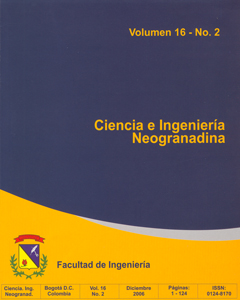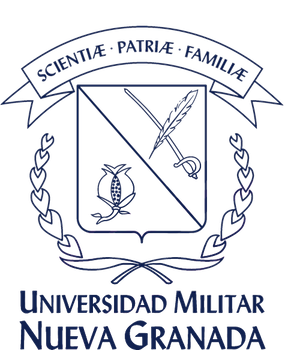Rugosidad y textura de superficies: Experimentos y simulaciones
Resumen
En este trabajo se aplican algunos elementos de la geometría fractal al estudio y caracterización de la rugosidad superficial. Los materiales bajo estudio consisten en agregados naturales, de amplia aplicación en la industria de la construcción. Se aplican tanto técnicas experimentales basadas en análisis de imágenes como modelos teóricos. En particular se explora el potencial de la lacunaridad –un método de análisis derivado de la geometría fractal, para describir patrones y dispersión espacial. Los resultados ilustran su aplicación en la caracterización de rugosidad superficial. Se discuten igualmente, limitaciones y ventajas de esta aproximación.Descargas
Agencias de apoyo:
Laboratorios de Ingeniería Civil de la Universidad Militar Nueva Granada, Proyecto ING- 2005-05 de la UMNGReferencias bibliográficas
PERESSAKO, A. G. HOSODA, N. and PERSSON, B.N.J. Physical Review Letters 95, 124301 (2005).
BERGERON, V. BERGER, C. and BETTERTON, M. D. Physical Review Letters 96, 098502 (2006).
BLACKMORE, D. and ZHOU, J. G. SIAM Journal of Applied Mathematics 56, 1694-1719 (1996).
MANDELBROT, M. The Fractal Geometry of Nature (Freeman, New york, 1982)
MAJUMDAR, A. and TIEN, C. Wear 136, 313-327 (1990).
CIAVAARELLA, M. et al., Proc. R. Soc. Lond. A 456, 387-405 (1999).
PERSSON, B. N. J. Journal of Chemical Physics 115, 3840-3861 (2001).
YAN, W. and KOMVOPOULOS, K. Journal of Applied Physics 84, 3617-3624 (1998).
AUSLOOS, M. and BERMAN, D. H. Proc. R. Soc. London, Ser. A 400, 331 (1985).
GADELWALA, E. S. et al., Journal of Materials Processing Technology 123, 133-145 (2002).
MACENAITE, L. PEKARSKAS, V. and ZUNDA, A. Materials Science 10, 268 (2004).
BLUMENTFELD, R. and MANDELBROT, B. B. Physical Review E 56, 112 (1997).
MUREIKA, J. R. and DYER, C. C. arXiv.orgqc/0505083 1, 1 (2005).
GREENHILL et al. Use of Lacunarity index to characterize sub-urban areas for land use planning using IKONOS-2 multispectral imagery (2002).
PLOTNICK, R. E. GARDNER, R. H. and O’NEILL, R. V. Landscape Ecology 8, 201-211 (1993).
HUANG, Y.-H. and CHENG, S.-C. International Journal of Computer Applications in Technology 22, 34-41 (2005).
TOLLE, C. R. et al., Physica D 179, 129-152 (2003).












